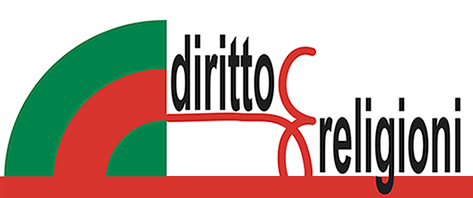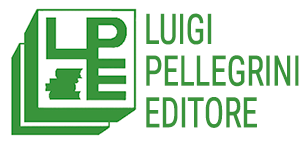NEWS VATICAN CITY Dialogue between Catholics and Jews. Restarting with a concrete commitment against all forms of anti-Semitism (Paolo Palumbo)
NEWSINDONESIA Flores Island’s natural landscapes ‘disturbed’ by geothermal transition. The views of Archbishop Paulus Budi Kleven (Caterina Gagliardi)
(13 January 2025)
With the issuing of Decree no. DCCII of 16 December 2024, the Pontifical Commission for the Vatican City State has promulgated Guidelines containing general principles on artificial intelligence which take effect, starting from 1 January 2025, for the Governorate of the Vatican City State and its personnel, as well as for the activities carried out by the same Governatorate in the areas referred to in articles 15 and 16 of the Lateran Treaty[1].
The Vatican Guidelines constitute the first normative body to be applied in a State system to systematically regulate the research, experimentation and development of artificial intelligence systems and models. The European Regulation 2024/1689 (AI Act) - entered into force on 1 August 2024 and not applicable to the Vatican City State, which, as is known, is not part of the European Union - will be in fact be operational in all Member States only from 2 August 2026, and from 2 February 2025 limited to the provisions set out in Chapters I (General provisions) and II (Prohibited AI practices).
The Vatican Guidelines largely incorporates the results of the debate which led to the affirmation of the need for the development of an algor-ethics, with respect to which the contribution of the religious actors has proven to be relevant, as confirmed, in the Catholic context, by the multiple interventions of Pope Francis, most recently the one held at the G7 on 14 June 2024[2], and by the Rome Call for AI Ethics[3] promoted by the Holy See in 2020. The Guidelines of the City State of Vatican, consequently, act as a tool aimed at promoting an ethical and transparent use of artificial intelligence, in an anthropocentric and reliable dimension, respecting human dignity and the common good (art. 1, paragraph 1). This objective can be ensured exclusively through the implementation of technologies compatible with the needs of guaranteeing the security of the Vatican City State (and of the Catholic Church)[4], the protection and confidentiality of personal data, as well as with the principles of human surveillance, inclusiveness[5], economic sustainability and care for Creation.
In accordance with what was highlighted by Pope Francis on the risks of discrimination deriving from the use of artificial intelligence systems[6], the Guidelines expressly prohibit the use of biometric categorization systems which can generate discriminatory effects by means of general anthropological deductions (art. 4, letter a) or social inequalities through the processing of personal data (art. 4, letter b).
Conversely, the Guidelines are characterized by a clear openness towards the use of artificial intelligence technologies, especially in operations for the conservation, valorization and restoring of cultural heritage (art. 8)[7] and in the workplace with the aim of increasing employee training processes, to improve safety conditions in the workplace and to protect the health of workers (art. 11, § 1). In this regard, however, the provision of art. 11, § 2 appropriately takes note of the risk of discrimination that may occur in personnel selection processes in the event of the use of algorithms that indirectly categorize the candidate on the basis of their data, including religious data.
In addition to the provisions dictated on scientific research and health (art. 6), copyright (art. 7) and infrastructures and services (art. 9), it assumes specific relevance the regulation of the use of artificial intelligence technologies in administrative and jurisdictional procedures.
In addition to reiterating that the use of these tools must in any case take place, consistently with their necessary anthropocentric dimension, "respecting the autonomy and decision-making power of the person who remains solely responsible for the measures and procedures in which they have been used" ( art. 10, § 3), the Guidelines subordinate the use of these technologies in administrative procedures to a previous «report containing the analysis of the impact of the regulation and follow-up, six months after the entry into force of the regulatory intervention , by a report containing the evaluation of the effects produced on the Vatican system" (art. 10, § 5). This requirement is, indeed, particularly useful for ensuring effective transparency of administrative action.
With regard to the exercise of judicial function, however, art. 12 of the Guidelines allows the use of artificial intelligence tools only for the organization and simplification of judicial work or for jurisprudential and doctrinal research, reserving the decision on the interpretation of the law, the evaluation of facts and evidence and on the adoption of any measure only to the magistrate (art. 12, § 2).
Finally, to ensure the effective application of the principles established by the Guidelines, the establishment of a specific Commission on artificial intelligence is envisaged. The Commission is responsible for the preparation of implementing laws and regulations and it also carries out consultative and monitoring activities. The same Commission is called upon to draw up a six-monthly report on the impact of the use of artificial intelligence in the Vatican City State.
The monitoring and control activities of the Commission, and specifically the preparation of the half-yearly report, thus appear to partially remedy the current absence of a sanctioning apparatus, which presumably will be introduced, as established by art. 15, through laws and regulations implementing the Guidelines.
Fabio Balsamo
Keywords: Artificial intelligence; Vatican law; Vatican City State; Vatican Guidelines on Artificial Intelligence
[1] The Guidelines also apply to operational bodies, scientific bodies, judicial bodies of the Vatican City State and to economic operators, suppliers, offerers and temporary professional appointees.
[2] Cf. Francesco, Discorso in occasione della sessione del G7 sull’intelligenza artificiale. “Uno strumento affascinante e tremendo”, 14 June 2024, available at www.vatican.va.
[3] Cf. Rome Call for AI Ethics, 28 febbraio 2020, available at https://www.romecall.org/.
[4] Art. 4, letter. e) and f) of the Guidelines prohibits the use of technologies that can compromise the mission of the Supreme Pontiff and the integrity of the Catholic Church.
[5] The Guidelines prohibit the use of artificial intelligence technologies that are not accessible to disabled people.
[6] Pope Francis, in the Message for the LVII World Day of Peace on 14 December 2023, had already highlighted the risks that can arise from the use of algorithms aimed at categorizing individuals in "social credit systems" (so-called social scoring). Furthermore, with specific regard to the discriminatory or harmful effects of fundamental rights deriving from the processing of personal data, the Guidelines, in line with the provisions of the General Regulation on the protection of Personal Data for the Vatican City State of 30 April 2024, appropriately provide for the application of the general principles also to the use and processing of the person's biometric data through artificial intelligence systems and models (art. 5, § 5).
[7] The use of artificial intelligence in the context of the restoration of cultural heritage must, however, take place in compliance with the internationally recognized methodological principles and the coordination and technical guidance functions of the Directorate of Museums and Cultural Heritage, as well as provided for by Decree no. CCCLVI, 25 July 2001, containing Regulations for the execution of law 25 July 2001, n. CCCLV, on the protection of cultural heritage.


